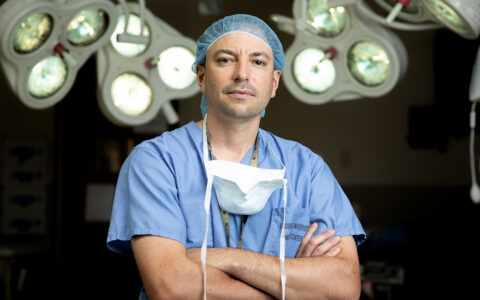When a patient arrives at Vanderbilt University Medical Center’s Undiagnosed Diseases Program, it’s typically just the latest stop on a long journey through the health care system.
To get to this point, a patient has likely been seen by generalists, teams of specialists and undergone innumerable tests, while medical experts came up empty-handed, said Rizwan Hamid, M.D., Dorothy O. Wells Professor of Pediatrics, director of pediatric medical genetics and genomic medicine and the Undiagnosed Diseases Program.
Sometimes it’s because a disease is so rare, it hasn’t yet been identified. Sometimes a patient’s symptoms don’t match traditional diagnostic criteria for their illness. More than 70 percent of the time, the culprit is a rare genetic disorder or one previously not identified, Hamid said.
Many patients, even those who have adjusted to a life with pain and disability over many decades, still yearn for a diagnosis. It makes sense for Vanderbilt to undertake such inquires to bring relief – or at least some answers – to suffering and often bewildered patients, with its advanced resources, including the BioVU genetic databank.
Deep Research Required
“The level of services, genetic research and testing capabilities, and medical expertise puts us in the best possible position to help these patients, who many times are desperate for answers,” he added. “It’s the collaboration between all departments and support from the administration that makes it work.”
President and CEO of Vanderbilty University Medical Center and dean of the Vanderbilt University School of Medicine, Jeff Balser, M.D., is an early and ongoing supporter of the program. He describes the team as “a remarkable collaboration of our clinicians, geneticists, biostatisticians and others” and has pledged resources for the program to continue independently of the NIH’s Undiagnosed Diseases Network.
NIH estimates show between 25 and 30 million people in the country as having a rare disease, with at least two million still seeking a diagnosis. During its eight years as part of the NIH network, Vanderbilt’s team saw about 300 patients from nine states and Canada, roughly half adults and half children, Hamid said.
Growing the Program
The expanded program, a partnership between the Department of Pediatrics at Monroe Carell Jr. Children’s Hospital at Vanderbilt and the Department of Medicine at the Vanderbilt University Adult Hospital, expects to raise the level of service to around 50 patients per year, with an eye toward further expansion.
The program goal is to use the best available science and resources to unravel these undiagnosed cases and achieve high solve rates. Unsolved cases will not be closed, as researchers will be able to continue looking for answers months and years after the patient’s initial evaluation, Hamid said.
Vanderbilt has pledged assistance through financial support of the investigations, which sometimes require weeks if not months of evaluations, research and data analyses. These time-consuming activities are typically not covered by health insurance, he added.






